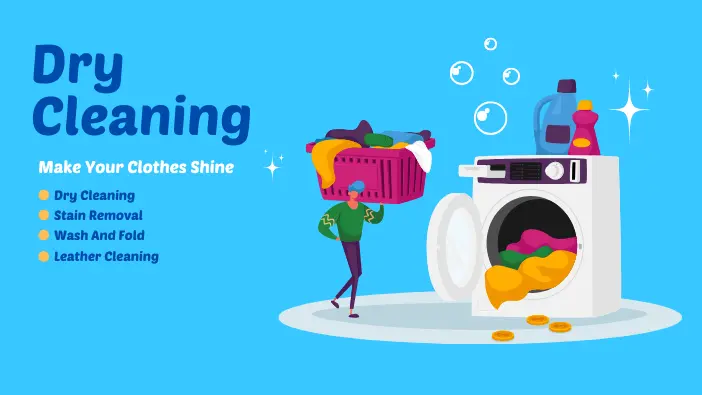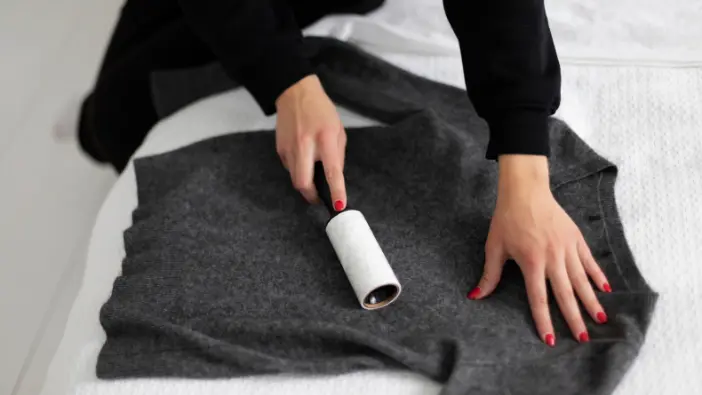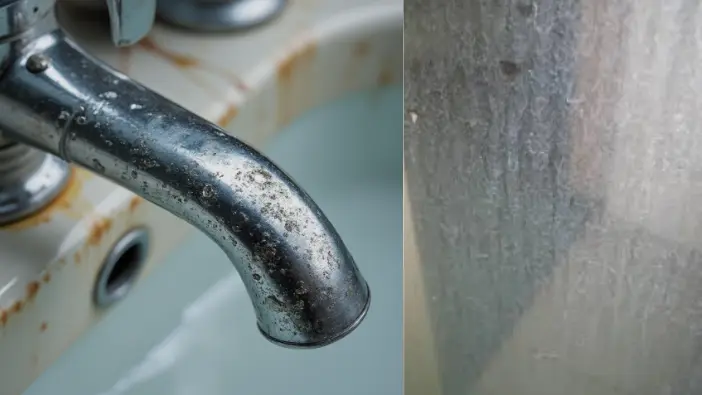Dry cleaning is a special way to clean clothes without using water. Though it does not sound practical, it helps keep the items in the best possible condition. There are several common basic questions regarding dry cleaning. Let’s discover what dry cleaning is, how it works, and why it’s different from regular washing.

What is Dry Cleaning?
Apart from water, dry-cleaning is a term employed when clothes are cleaned using other effective solutions to remove dirt and stains. In particular, this method is of great use for cleansing fabrics that are not suitable for rough washing in a normal washing machine. Once dry cleaning is done, people can wear their clothes and look presentable.
What Is The Process Of Dry Cleaning?
Dry cleaning refers to any action of cleaning clothes and other textiles, etc. Using dry cleaning liquid, also referred to as “solvent’ is used because it is more effective at removing dirt and stains than ordinary water. This allows the cleaning of clothes without the need to fully immerse the material. It’s similar to submerging clothes deep into a light solution.
What Is Dry Cleaning Introduction And Procedures?
The dry cleaning process begins like any other, and the sense garments are checked for possible stains and spots. The next Stage is done in a machine that has been constructed to ensure that stains are gradually and gently removed from the garments. In conclusion, all the materials are starch-finished, followed by pressing and finally drying to get a crisp finish.
Dry Cleaning vs. Washing
As already said, dry cleaning is defined as cleaning without the use of water and soap. Water, soap, and a great deal of spinning machines make up a complete washing cycle. Unlike washing, dry cleaning doesn’t use water or soap. Washing clothes involves water, soap, and lots of spinning. Dry cleaning, on the other hand, is more like a careful dance with special liquids that keep clothes safe.
The Science Behind Dry Cleaning
To begin with, Dry cleaning may be described in one-word science. It is all about the amperage, fluids, and right apparatus. The clenched fist has no water, which is the most common cleaning solvent.
Solvents Used in Dry Cleaning
Solvents are chemicals that effectively allow surface soil to be washed away or rubbed off surfaces in application. Now, the most widely used solvent in the dry cleaning process is perchloroethylene, commonly referred to as ‘perc.’ For any stained cloth business, Perc dirt wipes are an outstanding solution.
How Dry Cleaning Machines Work
Dry cleaning machines can be categorized as high-capacity washing machines. In the dry cleaning process, the clothes first go into a drum where a dry cleaning solvent is used on the clothes, and then a rocking motion is slightly applied to the machine to allow for the solvent to work and clean correctly.
Chemical Process of Dry Cleaning
Particles make stains and dirt. So applying some cleaning agents or solutions to the stains or dirt can help soften them or even break bonds and particles that hold them onto surfaces. This is done by first soaking the articles in the solvent, then evaporating and steaming the articles for reuse.
The last Stage in the Dry Cleaning Procedure
Dry cleaning, like other processes, has stages where cleanliness or cleanness of the clothes is the objective focus. There are key processes for dry cleaning, which are:
Dry Cleaning Step–by–Step
- Examination: An examination of garments that show stains and worn areas that would be targeted during the process.
- Pre-spotting: A rough out of targeted stains using chemicals and other agents.
- Cleaning: Pressure and other forces, such as heat, are applied to garments in a machine containing solvents.
- Drying: Solvents are first expelled from the fabric and then placed all rounded for sundry purposes.
- Pressing: Press the garments and smoothen wrinkles.
- Final Inspection: Garments are checked to ensure there are no outstanding defects.
Spot Removal During Dry Cleaning
Dry cleaning is preceded by a pre-cleaning phase that treats the most difficult stains, such as oily splotches or ink spots.

How Clothes Are Treated in Advance
Before the washing process, a thorough inspection of the clothing items is done. Solid stains are introduced into a vigorous washing process so that if dirt appears on the cloth, it vanishes.
- Pre-treatment and examination: At this stage, the prep worker prepares the clothes for laundering. If there are stains present, the stain removers appropriate for the particular fabric are employed.
- Stain evaluation in dry cleaning: Separate notation for each item to determine the hard stains that may remain on the item from its last cleaning. Appropriate markers are placed in regions requiring treatment.
- Pre-Cleaning Inspecting Process: Before placing the clothing in the washer, there is a pre-check to confirm that all pre-cleaning checks have been done.
Pros and Cons of Dry Cleaning
There are positives and negatives associated with doing dry cleaning.
Advantages of Dry Cleaning
- Gentle on Fabrics: Keeps delicate clothes safe.
- Tough Stains- Removed: Any hard stains can be removed with ease when solvents are used.
- No Shrink: Clothes do not shrink even as in the case when water is used.
Disadvantages of Dry Cleaning
- Costly: Normally, it is more than washing.
- Chemicals: Some cleaning solutions can be harmful to the environment.
- Not Suitable for All Fabrics: Some types of garments could still need a laundering machine.
Is Dry Cleaning Safe for Clothes?
There is no danger at all because dry cleaning is rather effective and quite useful. It is also excellent for special fabrics like silk or wool.
Dry Cleaning vs. Traditional Laundry
Now, let’s move ahead and start appreciating the differences between dry cleaning and normal washing machines.
Differences Between Dry Cleaning and Washing
So, dry cleaning always employs chemicals and solvents, while water is always employed when washing clothes. There is a lot of water and force used in washes with revolving action, but with dry cleaning, a good deal of force is not applied.
When to Choose Dry Cleaning Over Washing
In instances where clothes are marked ‘dry clean only’ or when the fabric is so delicate that it can be damaged in the washing machine, dry cleaning should be the most preferred option.
Eco-Friendly Dry Cleaning Alternatives
On the contrary, there are also more credible ways of dry cleaning clothes, which, in fact, are eco-friendly Cleaning.
Green Dry Cleaning Solutions
Green dry cleaning solutions are concerned with alternatives that have a minimal environmental impact. In these approaches, harmful substances are not employed, and safer cleaning is ensured for both fabrics and the environment. Likewise, customers are assured of clean clothes while making proper choices.
Sustainable Dry Cleaning Practice
The use of energy-efficient equipment, recycling of hangers, and biodegradable and recyclable packing materials are part of sustainable dry cleaning practices. Such initiatives endeavor to cut down on the waste produced and conserve resources. Opting for these kinds of rooms and services is a reflection that one has embraced environmentally friendly practices.
Organic Dry Cleaning
Organic, or as it is frequently referred to, green dry cleaning employs extraction processes with organic-based detergents placed. This method does not use harmful residues, ensuring it is a better option for people and the environment. It ensures a dry cleaning service that is clean and green.
Tips for Choosing a Dry Cleaner
Finding a reputable dry-cleaning company that consistently meets client expectations and has received praise from clients is a top priority when looking for such a service. For more safe and eco-friendly alternatives, inquire about the process and whether there are organic or eco-conscious dry cleaning options. Whether they use non-descriptive procedures for their services and guarantee proper care for the garments should be investigated as well. It also makes sense to check if the company has such services as picking up and delivering the clothes – this adds ease to the whole process. Finally, do some price comparison for quality services without overpaying.
Conclusion
Dry cleaning is a viable option for many types of fabrics and tough stains, and it uses less water. I have observed that understanding dry cleaning most times relieves people of the fear of dirtying themselves. There’s always something good that can come out of any situation, which is that it’s never too late to act against the dirt. Dry or green cleaning can be opted for, and the mechanics of those sub-processes are aimed to be in the best ways.











